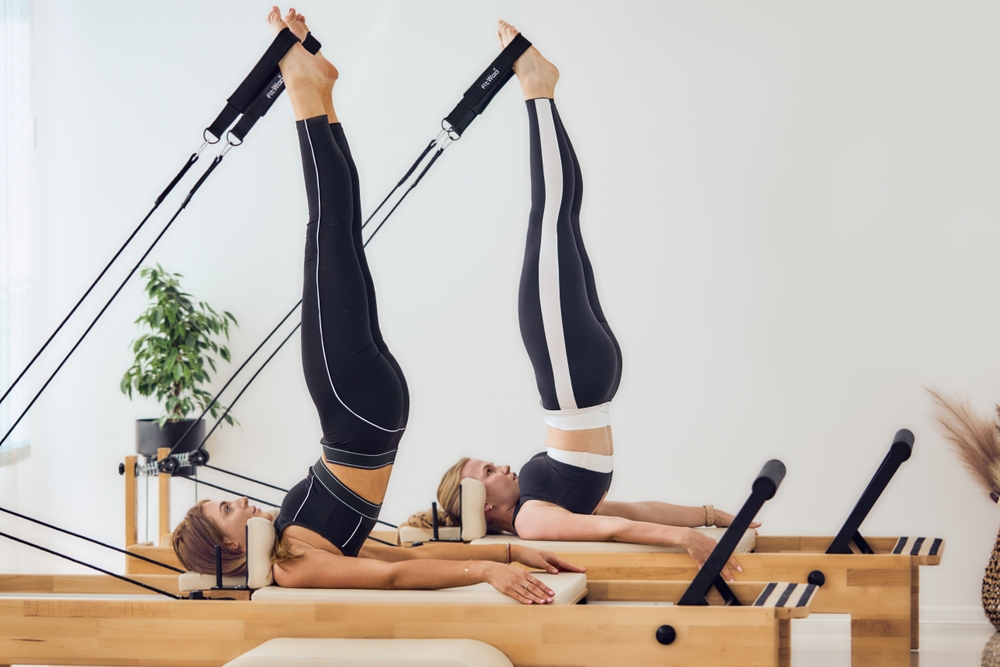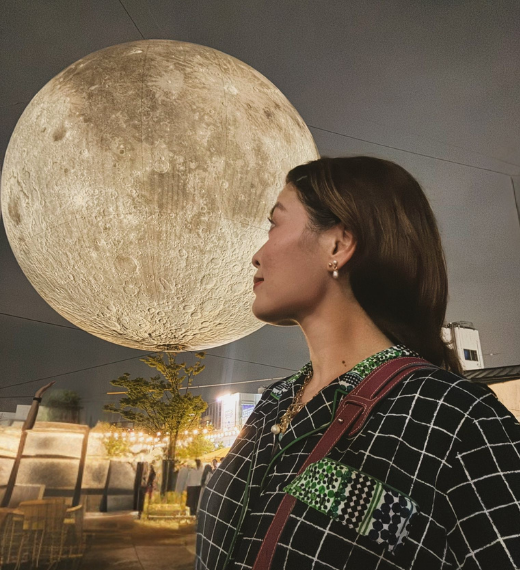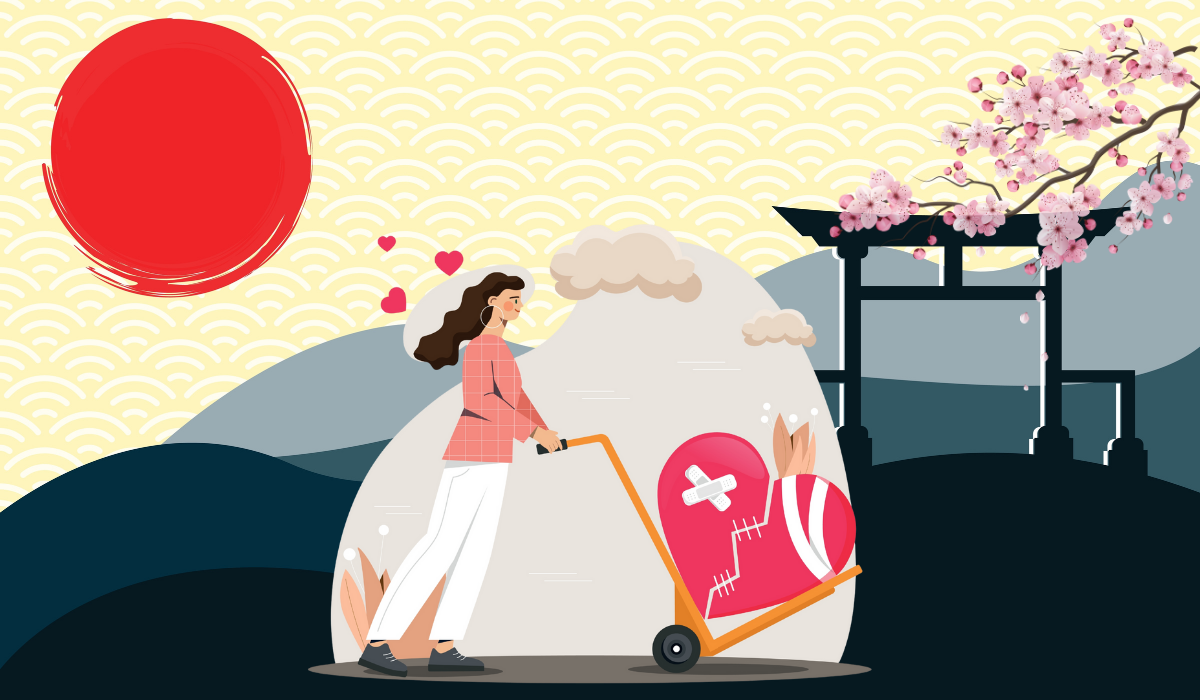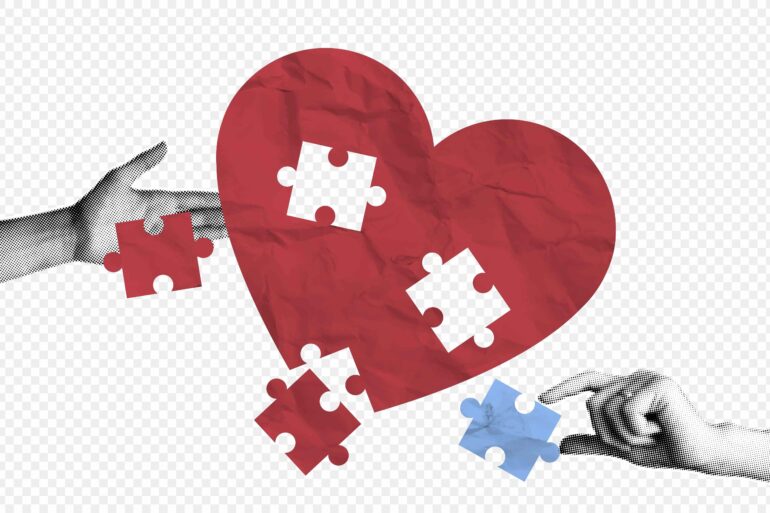Healing doesn’t always look quiet or composed. Sometimes it’s messy and loud and a little ridiculous. But if you’re lucky, it’s also shared. Held. Witnessed.
“You seem really okay considering what you went through,” my friend Ysa (not her real name) said as we sipped coffee during a quick trip to Manila.
“I think a lot of people are saying that,” I mused. “But what is everyone expecting anyway? A major meltdown on the internet? Videos of me bawling? I’ve never been the type.”
Just a few nights before this conversation, I had another friend who asked how can someone move on from a failed relationship with as much dignity as possible. “How are you doing it?” It’s always a weird ask because people tend to think that whatever’s out in public is the whole story when it’s barely two percent of someone’s entire day. “Focusing on work and doing a lot of pilates,” is how I would normally answer in jest but it is quite more complex than that.
You see, I got lucky. My marriage fell apart at the beginning of one of my biggest projects as a freelancer in public relations and it’s work I had to do alongside my freelance journalism. I was working at the World Expo, doing PR for one of the pavilions. I didn’t have the luxury of breaking down. The deadlines were relentless, and the show had to go on—with or without a marriage to come home to.
1. Move. A lot. In work and in exercise.

I anchored myself to the one thing I’ve always known how to do: keep moving. Meetings, messaging, media plans. Catching the Shinkansen between Tokyo and Osaka multiple times a month. Then Pilates. And repeat.
Travel. For work or pleasure—just go. Change your scenery as often as you can and throw yourself into something bigger than your heartbreak. A project, a deadline, a destination. Forward momentum doesn’t fix everything, but it keeps you from sinking.
There’s something about a reformer bed that makes you feel like you’re slowly putting your life back in place, one core muscle at a time. I went to my neighborhood studio in Tokyo as often as I can to maintain the rigorous practice I have with ONELIFE in Manila which is also the first place I run to the moment I land in every visit. It doesn’t have to be dramatic. Just start with your body. Movement is medicine. Even when your brain is spiraling, your limbs will lead you out. The glow up you get is also pretty priceless.
2. Get under someone.

Ah, yes. The cliché.
“But isn’t that the easiest way?” Ysa asked for the nth time that morning, mildly exasperated that I haven’t been dating. “I’ve tried it in previous breakups,” I said. “And yes—it works. Kind of.”
Since we’re no prudes here, I’ll admit: in the early days of my dating life (pre-marriage, pre-heartbreak), it felt like a shortcut to reclaiming power. A way to “wash off” the imprint of someone who no longer deserved to linger.
But this time, I’ve skipped that part—on purpose. Maybe that’s why it feels slower. Maybe that’s exactly what I need.
No, it won’t heal your soul. But it might remind you that you still have one. (And a body. And options.) I’m not saying jump into bed with the first man who makes you laugh over dinner. I’m saying: it’s okay to let someone touch you and not be haunted by what came before.
Just make sure he’s hotter and that he also pays for the oysters.
Related story: Is this love or just a really good story?
Related story: Love, lawyers and loopholes: What celebrity prenups reveal
Related story: ‘Materialists’: Love, money, and the messy choices in between
3. Surround yourself with friends who don’t flinch.
What really got me through were the people who never walked on eggshells around my heartbreak. The friends who let me cry, rage, spiral—and still took me out for ramen after. I was held up by women who’ve done this dance before, kind enough not to say “I told you so.” Instead, they said things like: “I got you a new vibrator,” or “It was always a mismatch. Even my husband wondered why you were with him!” and “You’re glowing—should we pretend it’s the trauma or the Pilates?”
Friends, both old and new, showed up in every way that counted. The ladies and the gays called late at night just to make sure I didn’t feel too alone. “Our favorite fag hag, did you think we’d let you go through this alone?” one of them teased and that made me burst into tears, grateful for all the genuine connections I have made in my life.

One came over with homemade collagen soup and made me eat when I didn’t have the will to step out or make anything for myself. Colleagues-turned-confidantes sat patiently as I word-vomited every tangled thought. They comforted me and reminded me I’d be okay—even when I wasn’t sure I believed it.
The ones who’ve known me for over a decade? They locked arms and dragged me forward. Back into myself. Back to the version of me that existed before I gave so much away in a marriage that no longer felt like a safe place to land. They took me to concerts. Fed me when I forgot to eat. Got me drunk and danced with me in the empty streets of Tokyo as I laughed and cried at the same time like a woman being reborn.
And here’s the thing about healing—it doesn’t always look quiet or composed. Sometimes it’s messy and loud and a little ridiculous. But if you’re lucky, it’s also shared. Held. Witnessed.
4. Let your feelings serve a purpose.
Once the shock left my body, what remained was rage. Not the key-his-car or rage-post-on-Instagram kind. I’m talking about the quiet, steady burn that comes from knowing you’ve been deeply wronged—and still choosing to move with grace.
But rage, if you let it, can be clarifying. It has direction. It can sharpen your focus and propel you forward. Channel it. Into a revenge body, a career milestone, a move to a new city, or even something as mundane—but healing—as finally blocking him on everything. (Yes, even LinkedIn. Especially LinkedIn.)
Sitting with your feelings doesn’t mean staying in them forever. You can grieve and grow at the same time.
One of the best things I learned in therapy is this: Every emotion is valid. Even the ones people don’t find palatable in women—anger, ambition, pride, self-preservation. I’ve often been made to feel guilty for not being the kind of person who wallows. As if processing pain must look like breaking down publicly to be believed. But I’ve always been the type to pick myself up, reapply my lipstick, and keep walking.
Sitting with your feelings doesn’t mean staying in them forever. You can grieve and grow at the same time. You can cry while sending invoices, spiral during Pilates, rage-clean your entire apartment, or find closure mid-haircut. Healing is not linear—and it certainly doesn’t follow anyone else’s timeline.
The point is: don’t let your feelings go to waste. Let them build something.
5. Get a good therapist.

In case it’s not obvious by now: go to therapy. Not just once. Not just when you’re on the brink. And not just to prove to yourself you’re “trying.” Go because healing requires help—and you don’t have to do it alone.
Find someone who suits your needs. Not all therapists are created equal, and not all will speak your emotional language. Mine was recommended by my best friend—a Jungian psychiatrist with a gentle face and zero tolerance for my usual deflection tactics. She called out every self-sabotaging habit, every excuse masked as logic, and every wrong decision still being driven by a fearful inner child.
And yet, I never felt judged. Just seen. Heard. Understood. The kind of understanding that makes you exhale for the first time in weeks.
Therapy helped me name what I couldn’t articulate. It gave shape to the heaviness. It taught me that strength isn’t about skipping the sadness—it’s about surviving it without turning bitter. Without turning on yourself.
If you’re lucky enough to find someone who challenges you and champions you at the same time, hold onto that. Go weekly. Take notes. Cry mid-sentence. Laugh when something suddenly makes sense. That’s healing too.
6. Say yes to life again.

This was the summer I stopped overthinking and started saying yes to life again. To dinner with people I barely knew. To last-minute trips. To more wine at lunch and fewer reasons needed to celebrate. To shorter hemlines and redder lipstick—the kind I wore before I got married, before I edited myself down to fit a version of life that wasn’t mine anymore.
I said yes to the versions of myself I missed. And to the ones I hadn’t even met yet.
One afternoon, while helping me sort through the chaos that is my iCloud, a friend quietly compiled a video montage—photos and clips of me in the last few months. “So you can see how much life loves you back,” she said. And she was right.
There it was: proof. Not just of joy, but of my capacity to feel it. My smile, my laugh—they looked real again. Not forced. Not curated. Just… me. Present. Alive. And slowly, but surely, whole.
Related story: No second chances: Is the ‘cut them off’ dating trend too harsh or just clear?
Related story: Raising little New Yorkers with Filipino roots
Related story: AI relationships: Yay or nay?
7. Rewrite the narrative.
For a while, I kept replaying everything in my head—like a director obsessed with reshoots, searching for a better ending. It felt like one of those Choose Your Own Adventure books. If I had done this instead of that, would I still be married? Would it have mattered? Would I have even liked staying married?
But it was pointless. Because the truth is, I didn’t want him back. The moment I saw the proof—the thing I feared but hoped wasn’t true—something in me clicked. I came home that night and there was no screaming, no grand confrontation. Just clarity. I was done. And, honestly, I was disgusted.
That was the moment I stopped trying to hold up a marriage I had been carrying alone for far too long.
It’s about honesty—without turning your pain into a performance. It’s the quiet strength of choosing not to bleed all over people who didn’t cut you. Of knowing that your story deserves to be told, but on your terms.
Closure isn’t something you’re given; it’s something you decide on. It doesn’t come wrapped in apologies or explanations. It begins the second you stop giving weight to the wrong story.
So I started telling myself a new one. One where I no longer extend grace to people who use it as a hiding place. One where peace is chosen, not chased. One where heartbreak is no longer the headline—but the backstory to something better.
A new narrative where the plot twist… is me.
8. Know that dignity isn’t complete silence.

Some people mistake my composure for suppression. But dignity doesn’t mean pretending you’re fine. And it certainly doesn’t mean keeping everything to yourself or denying things.
It’s about honesty—without turning your pain into a performance. It’s the quiet strength of choosing not to bleed all over people who didn’t cut you. Of knowing that your story deserves to be told, but on your terms.
Grief, after all, isn’t always loud. Sometimes it creeps in between client emails. Sometimes it hits mid-pilates stretch, in the middle of a hip opener you didn’t see coming. And sometimes, it shows up when your esthetician tells you your skin’s finally calming down—like it knows your heart is, too.
Dignity lives in those in-between moments. Where you let yourself feel, but never let the pain define you.
So, if there’s anything I learned these last six months, it’s this:
Let the people who love you show up. Reintroduce yourself to your body. Let work distract you until you remember you’re really, really good at what you do. Let the sadness have its time, but don’t make it a personality trait. Let the lightness in when it wants to come back–and it will, quietly at first, then all at once.
And most importantly, say yes. To the new. To the weird. To the unexpected.
You don’t have to be unbothered. You just have to be becoming. And one day, you’ll look around and realize: you already are.








